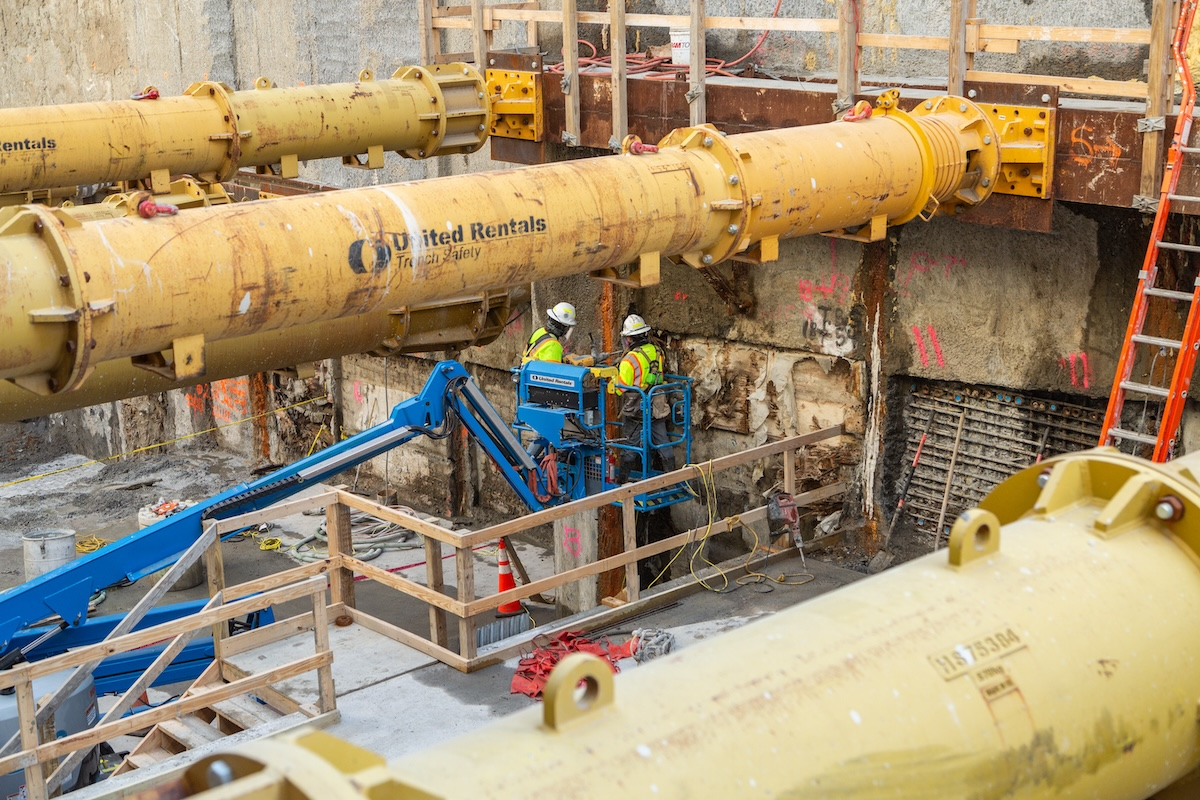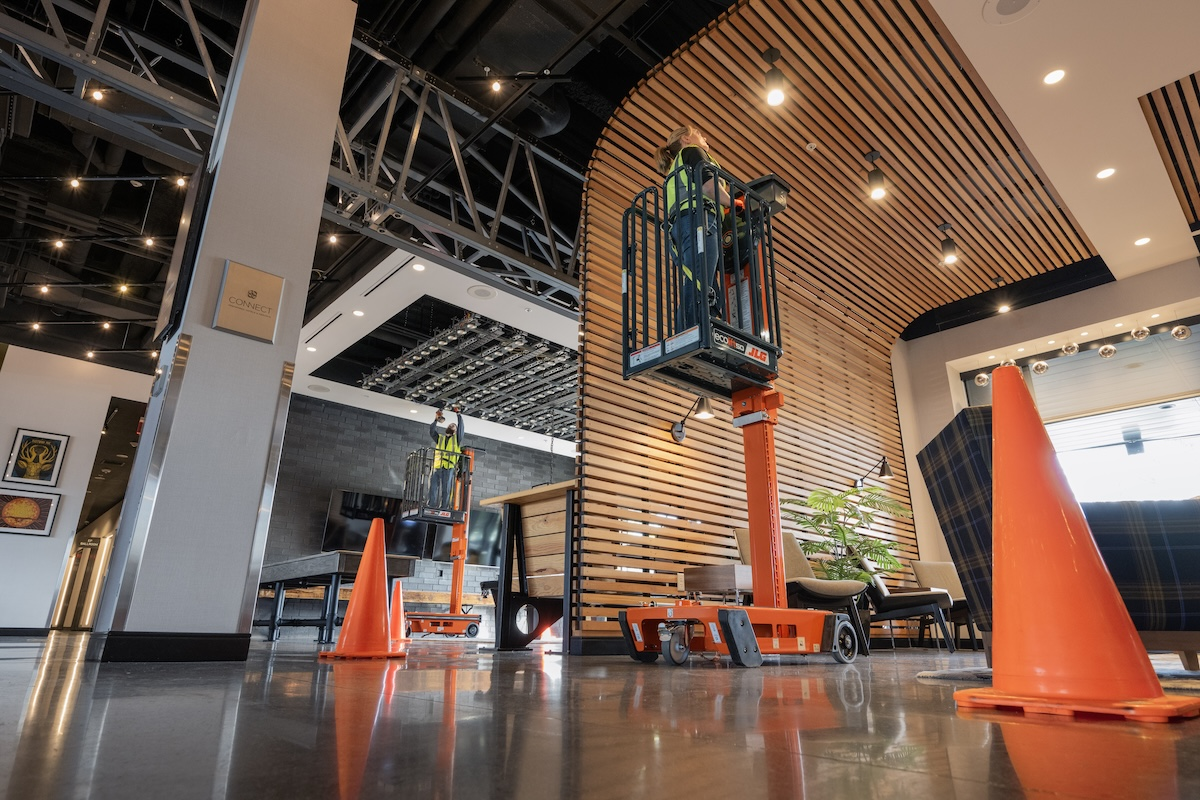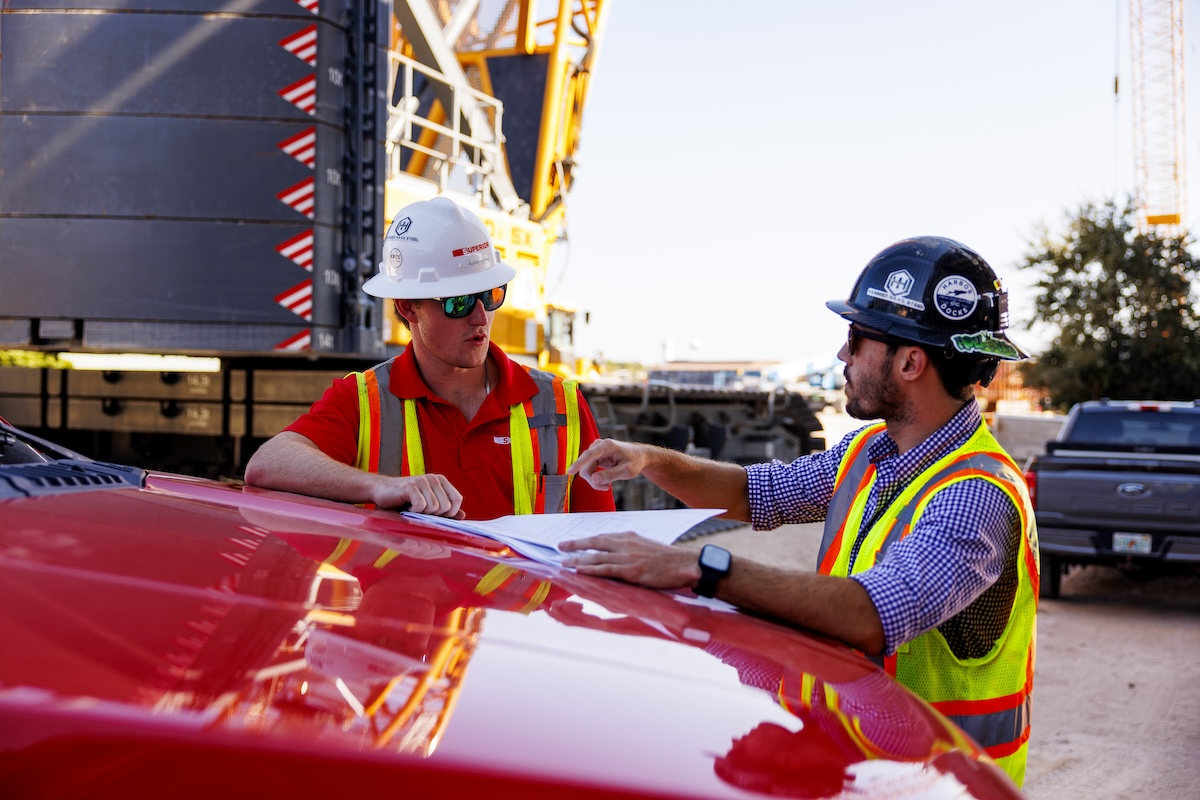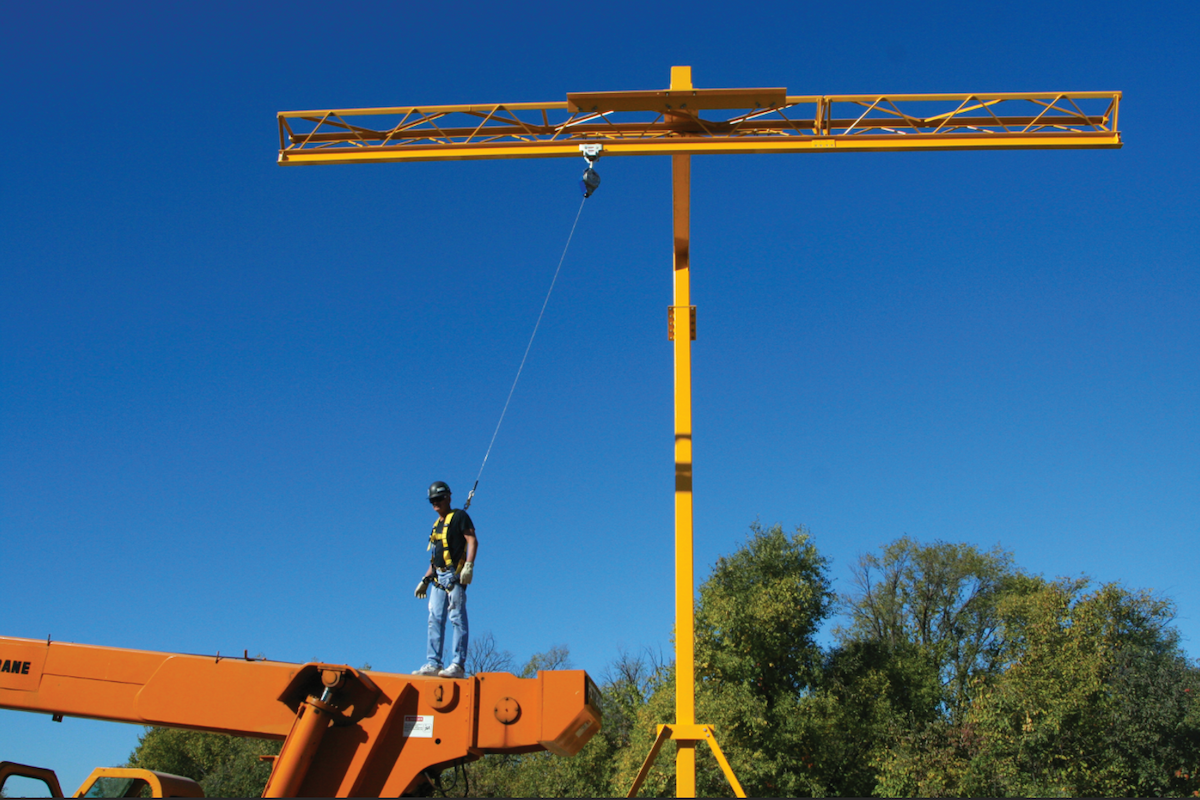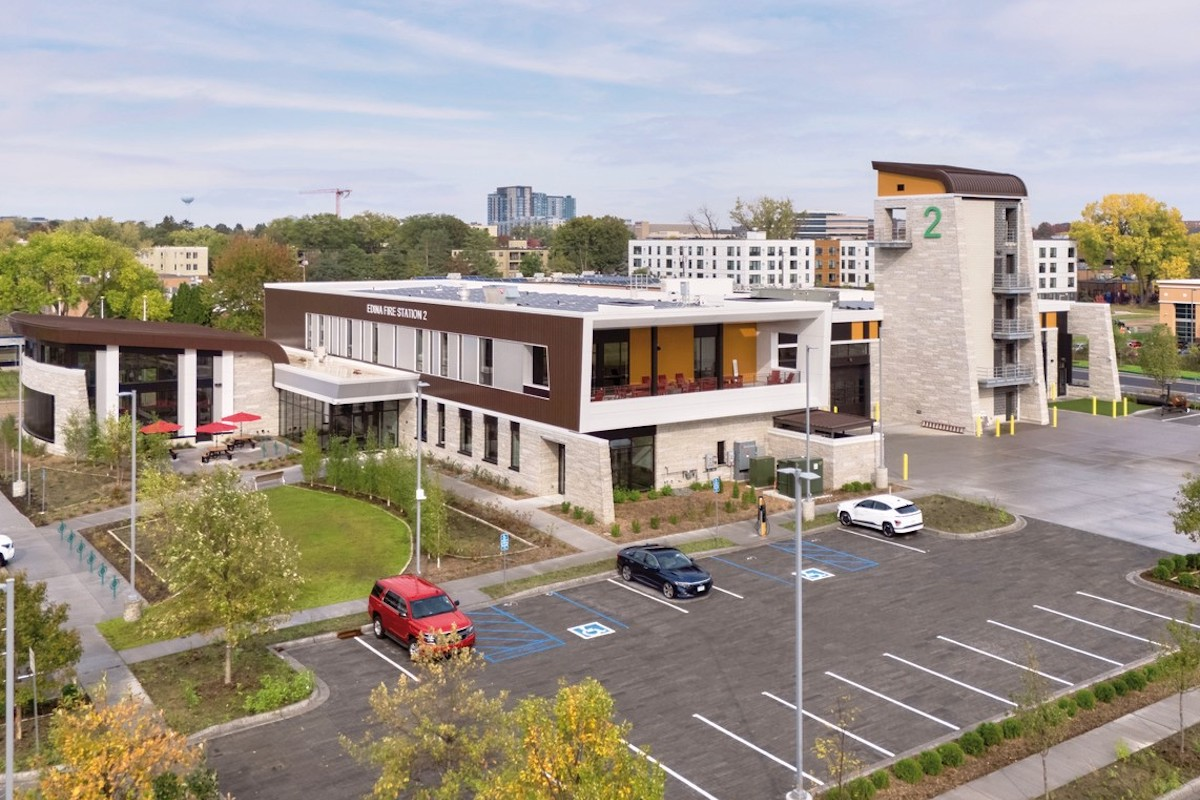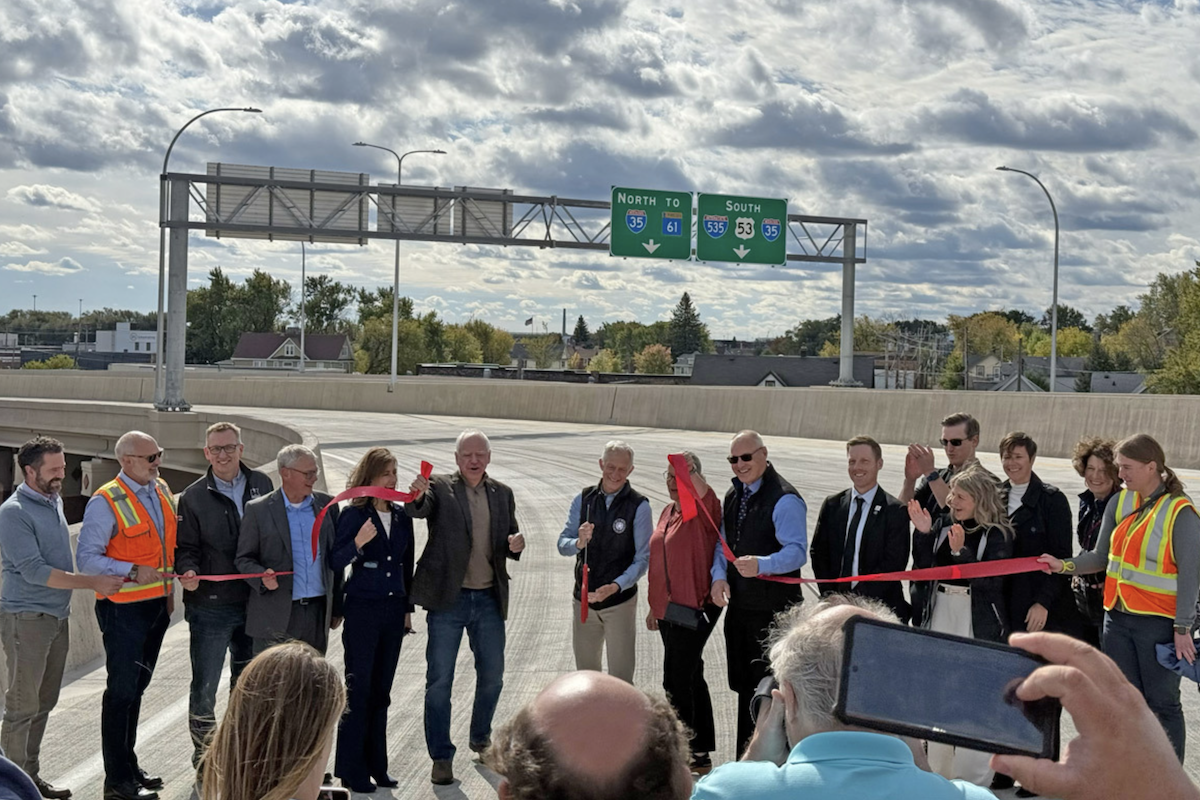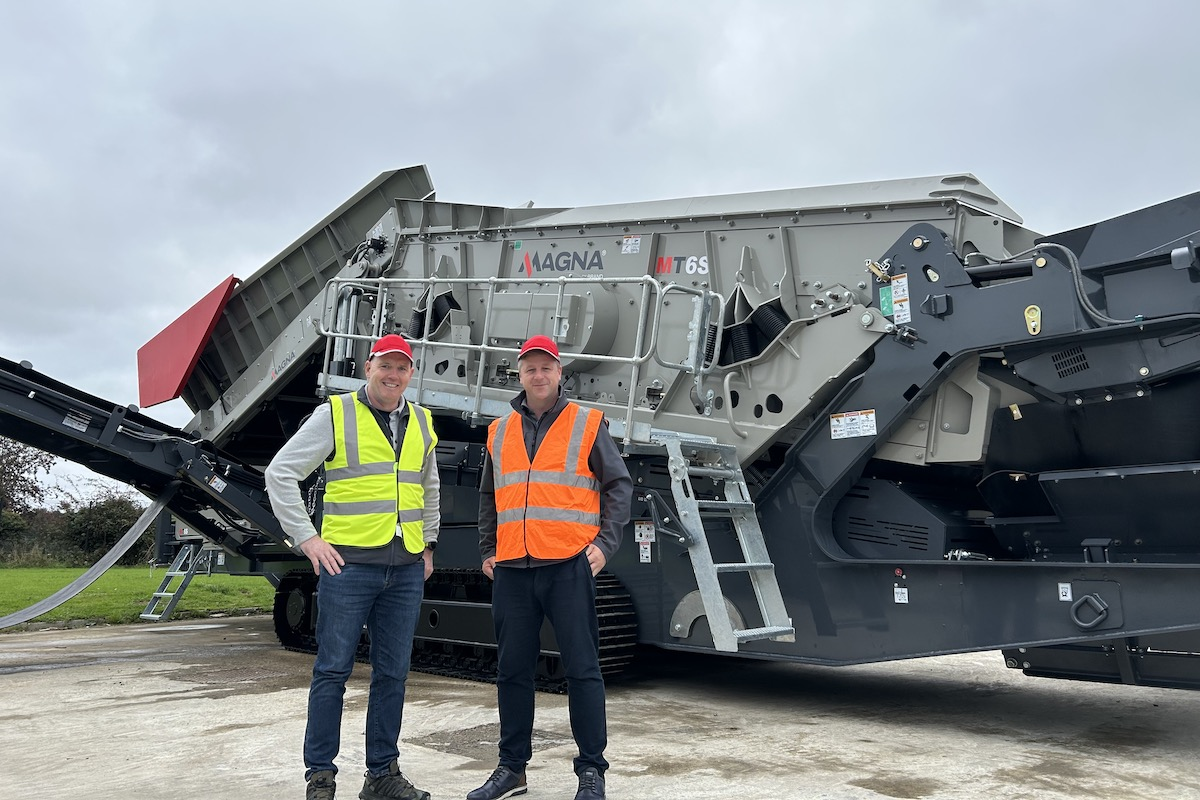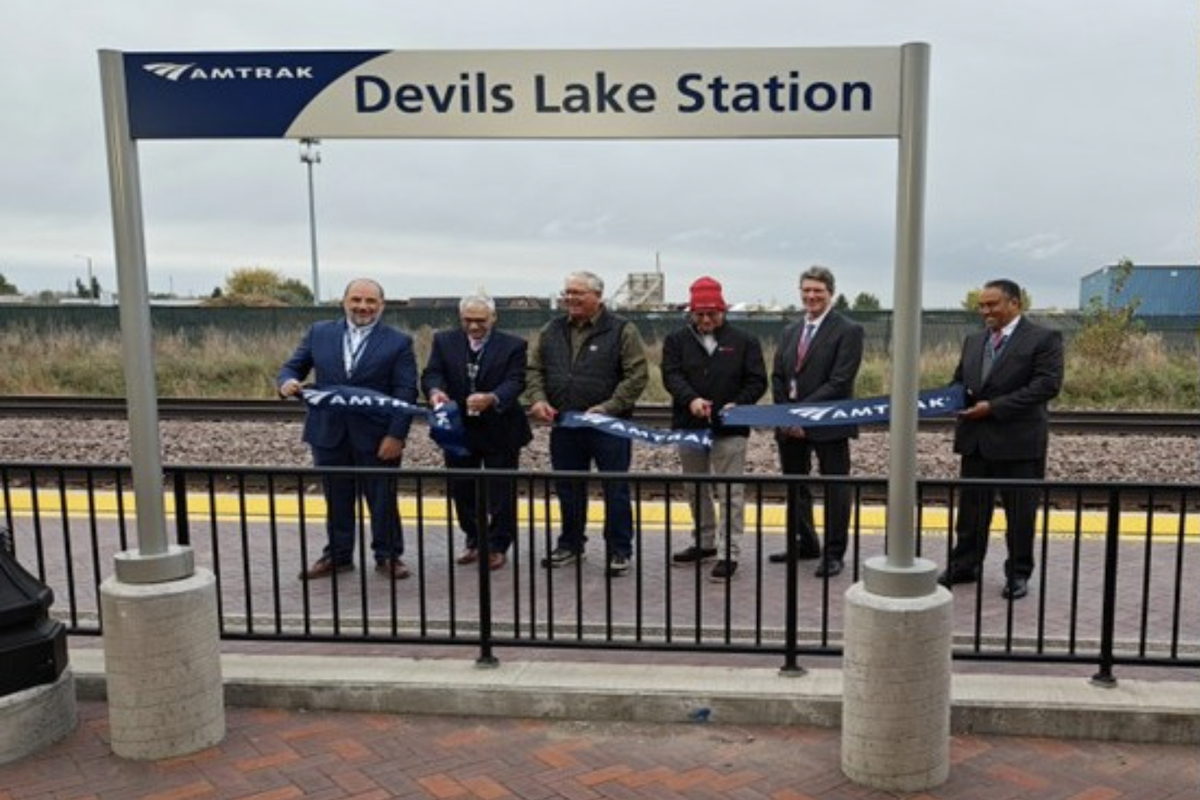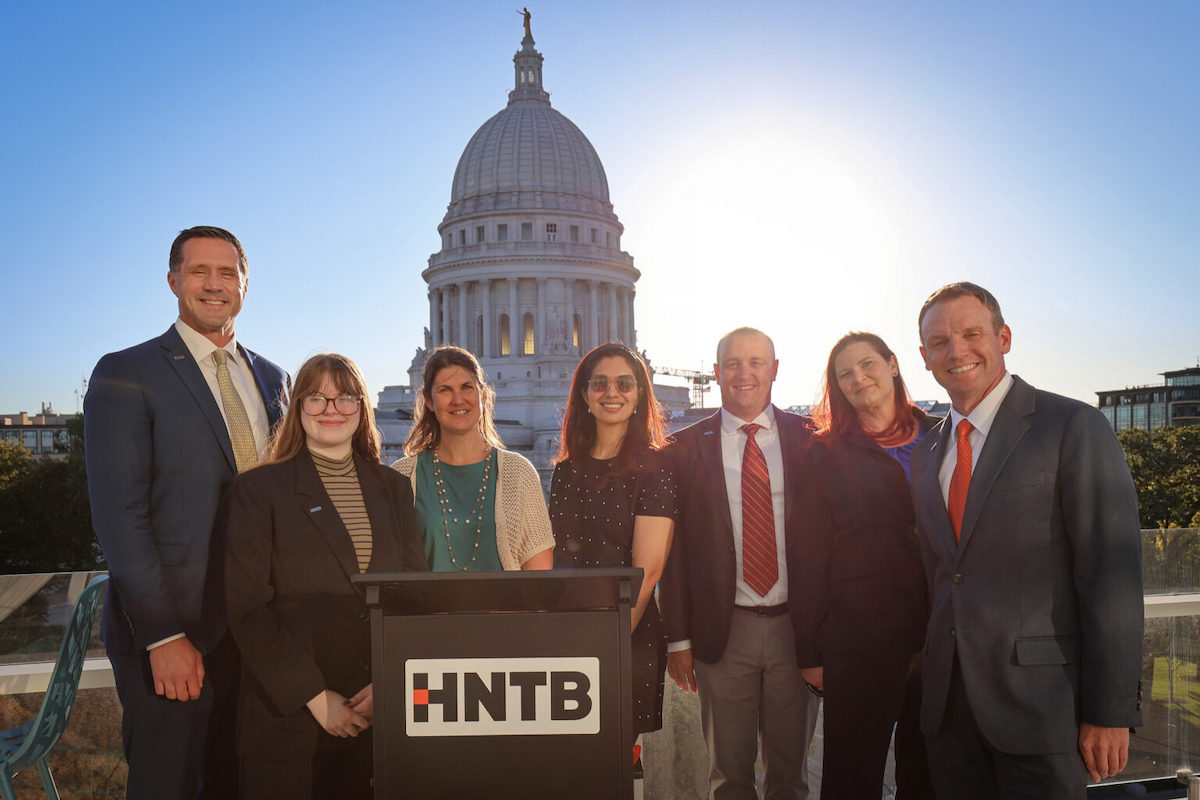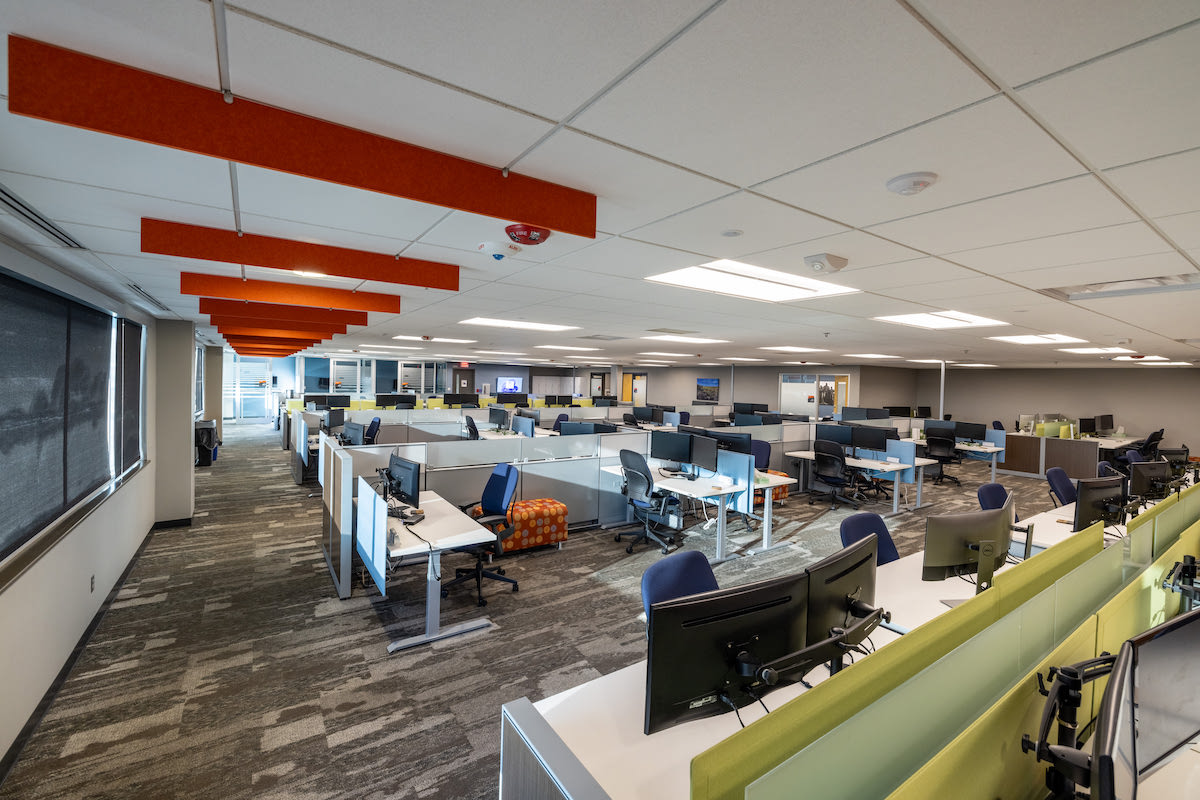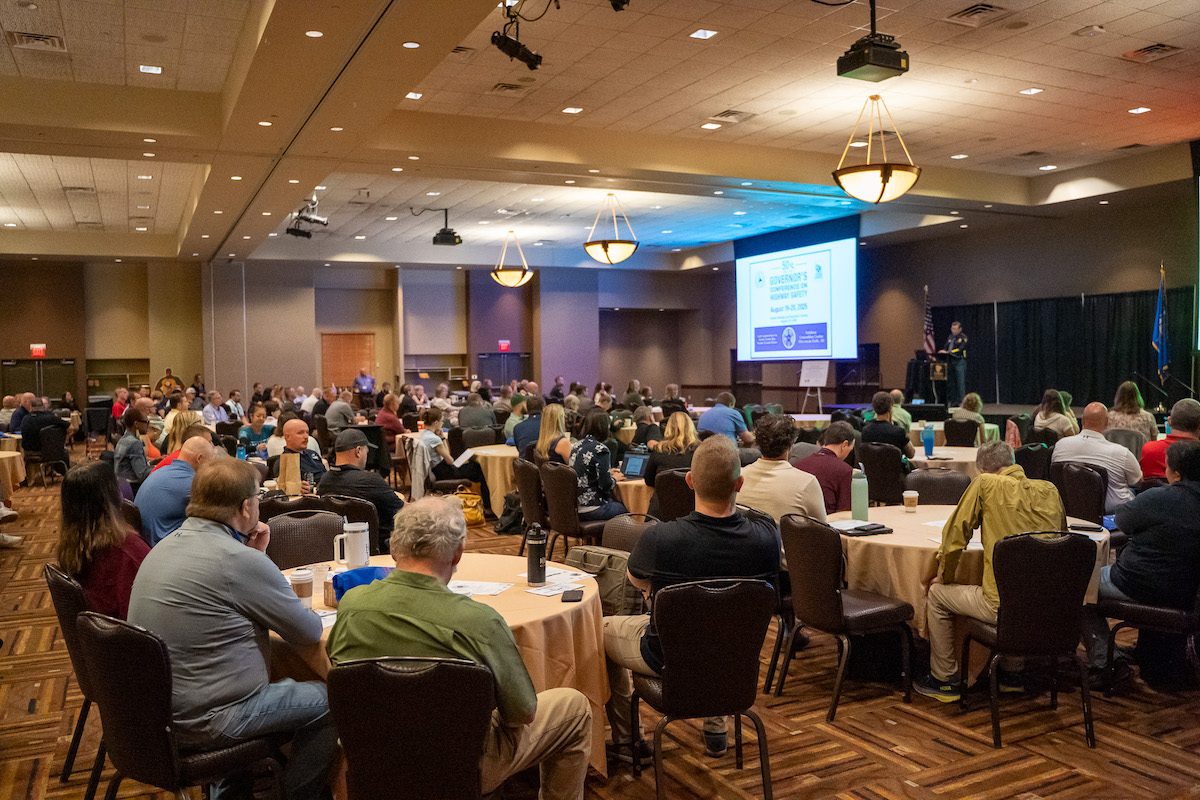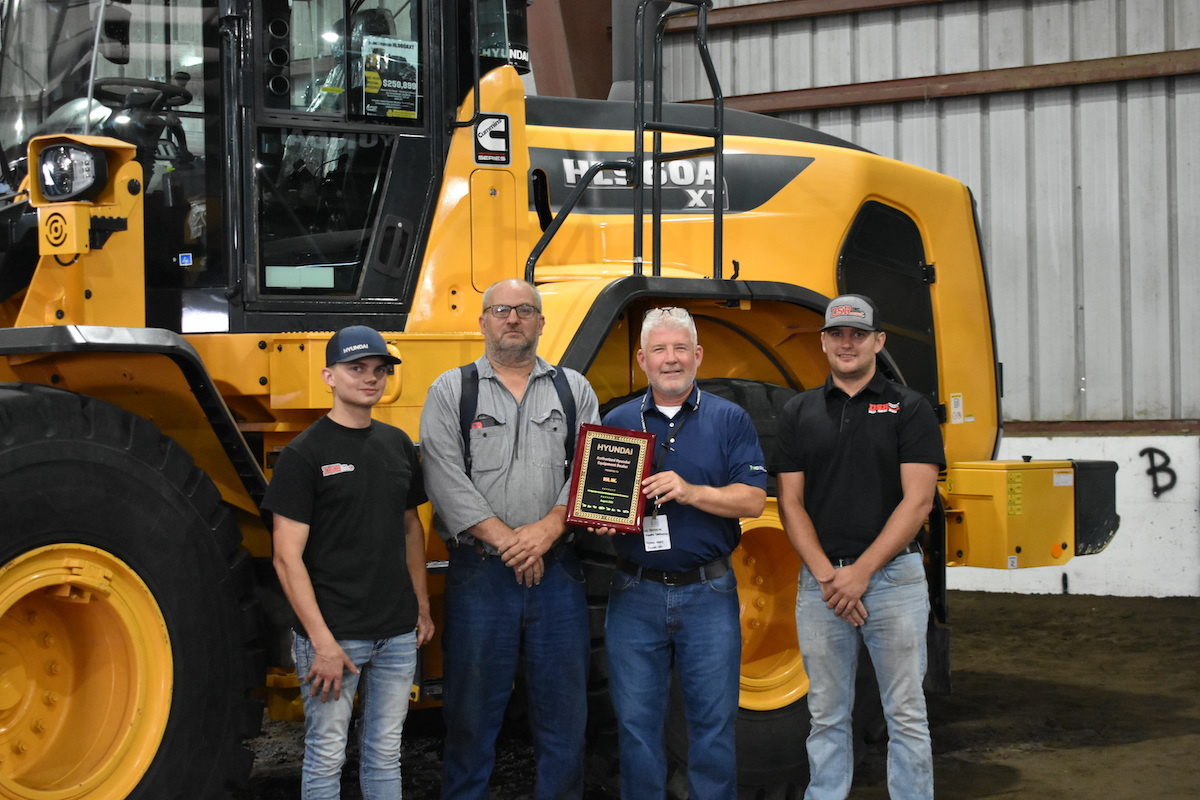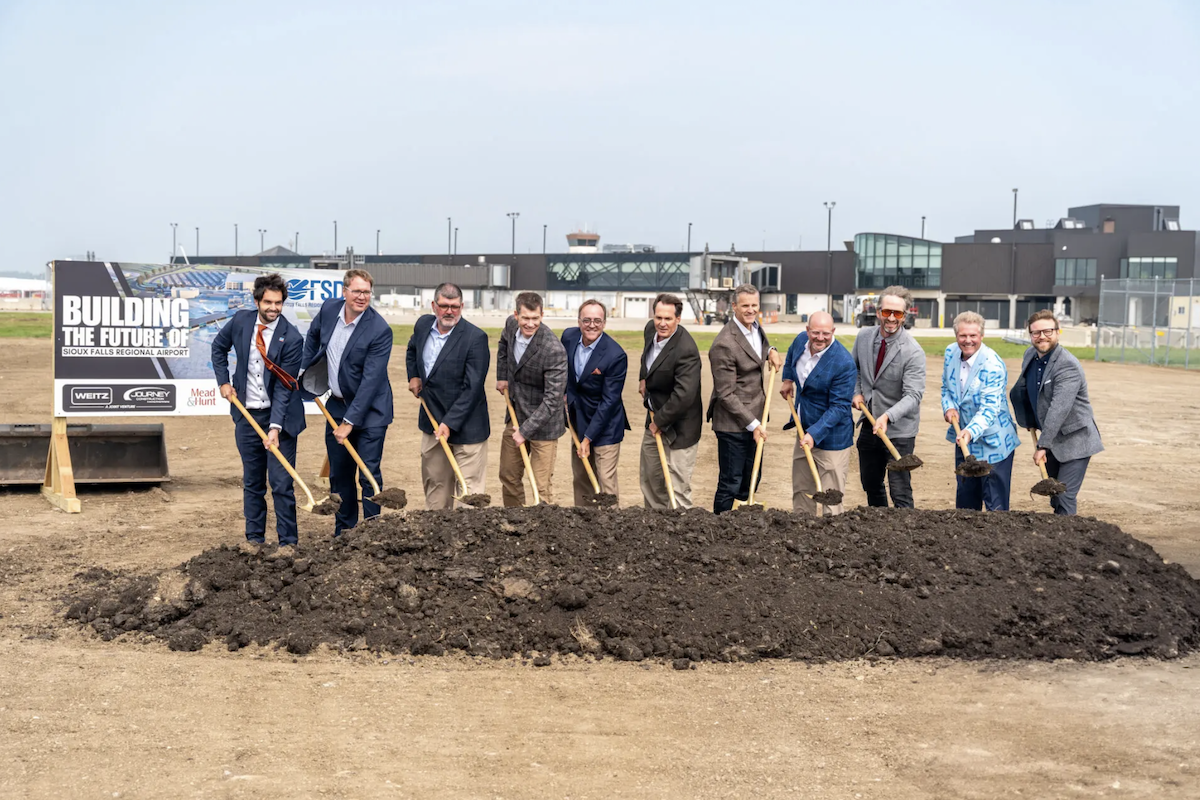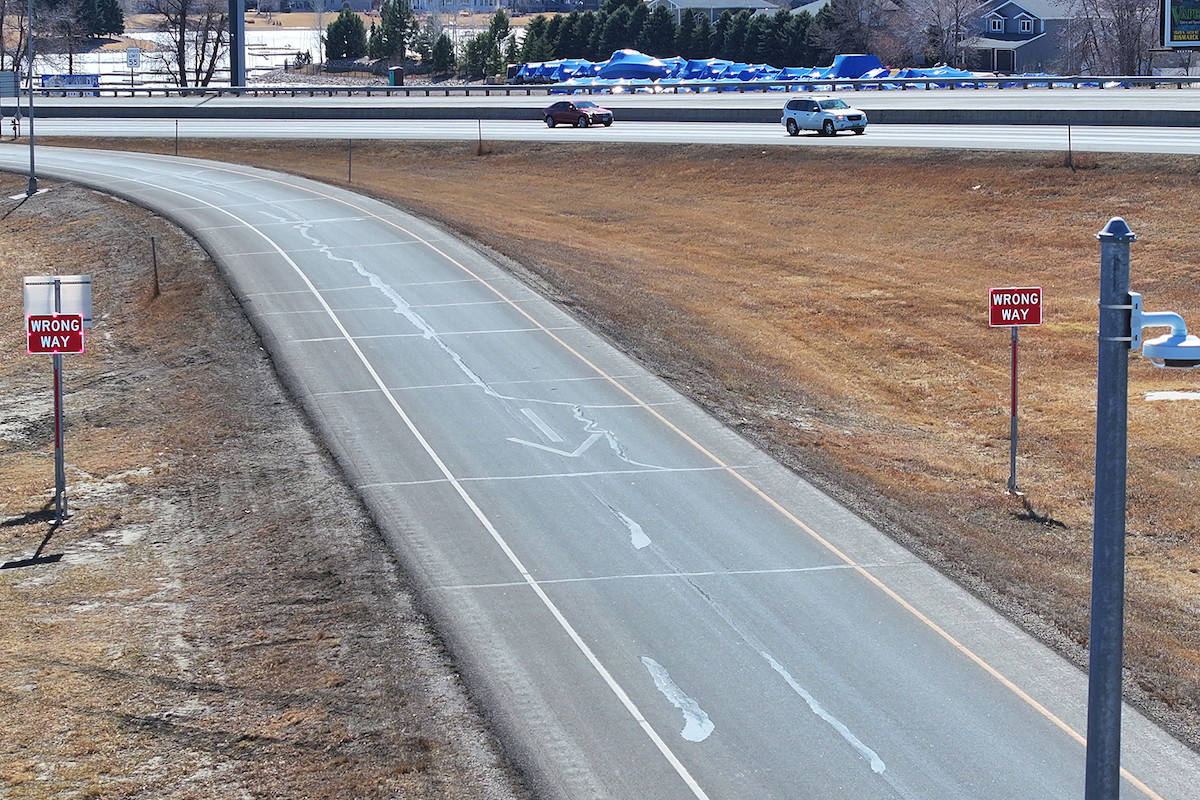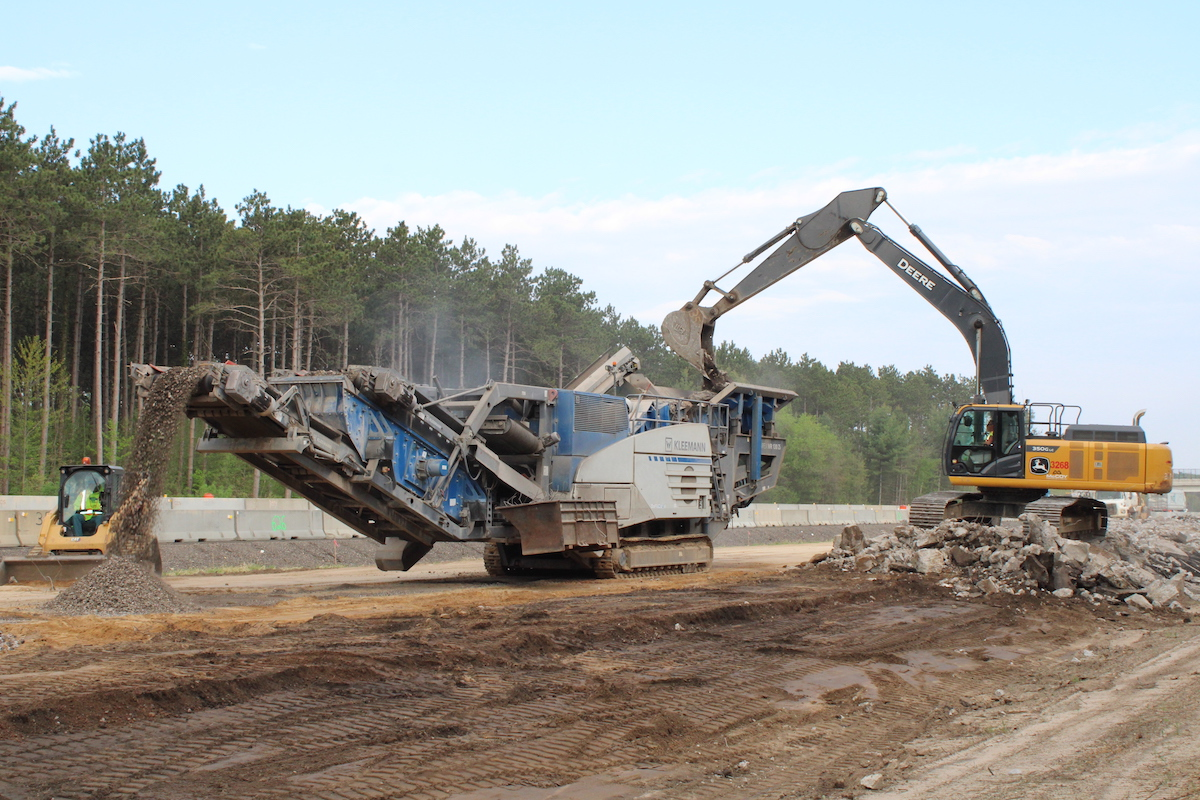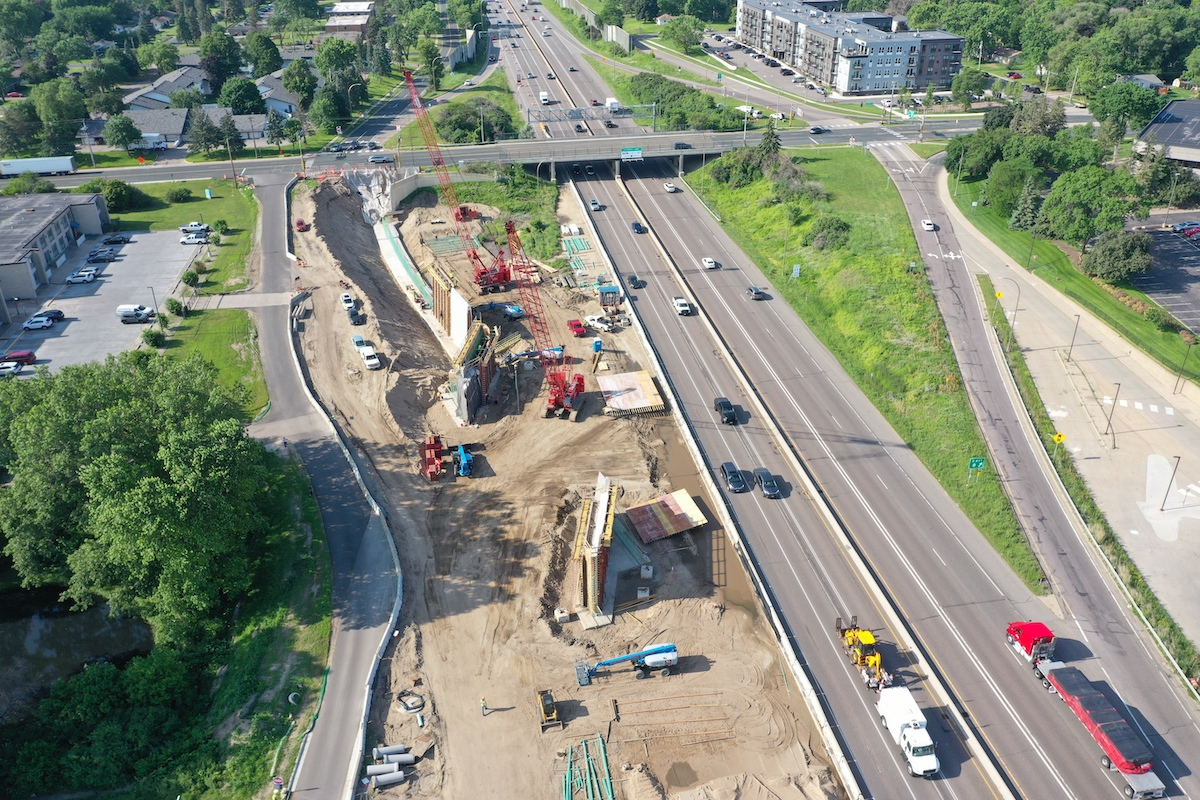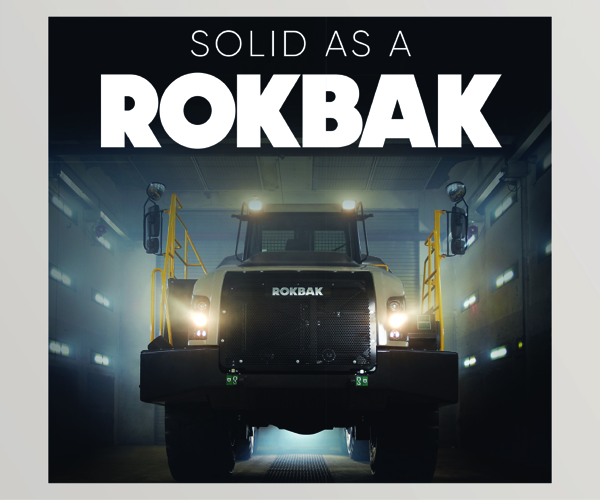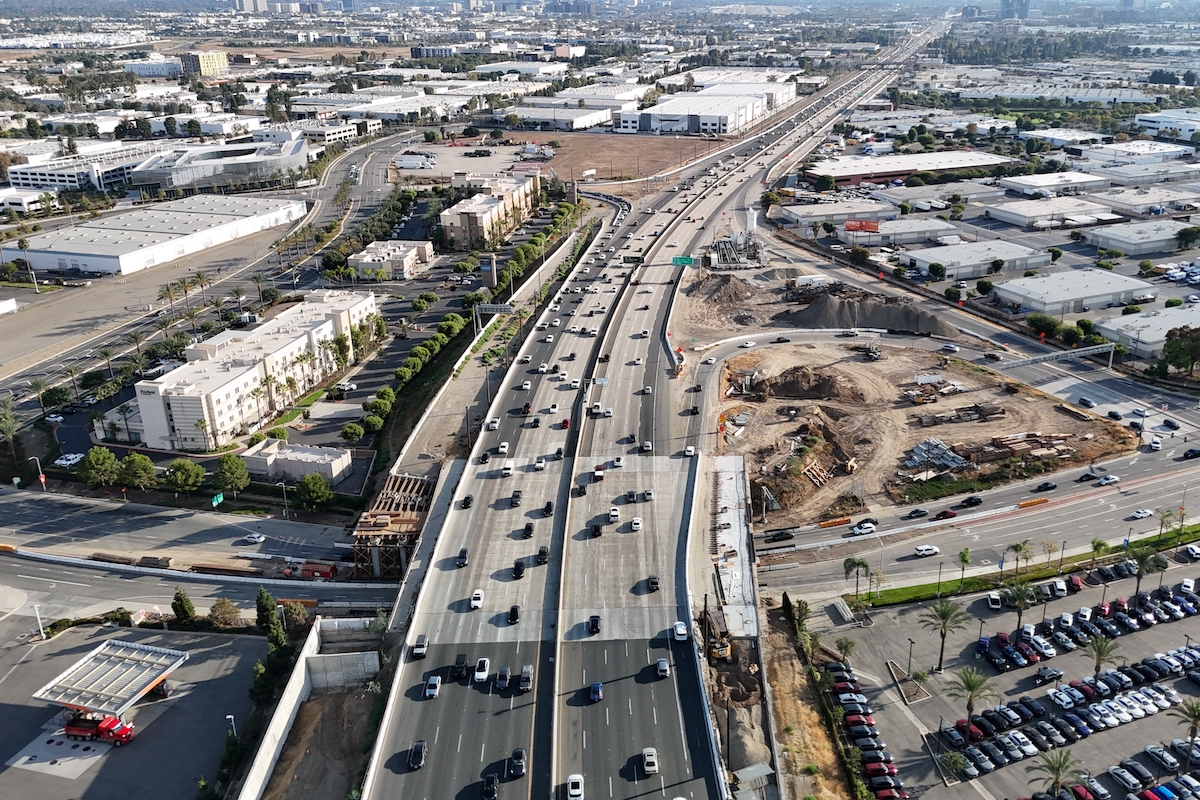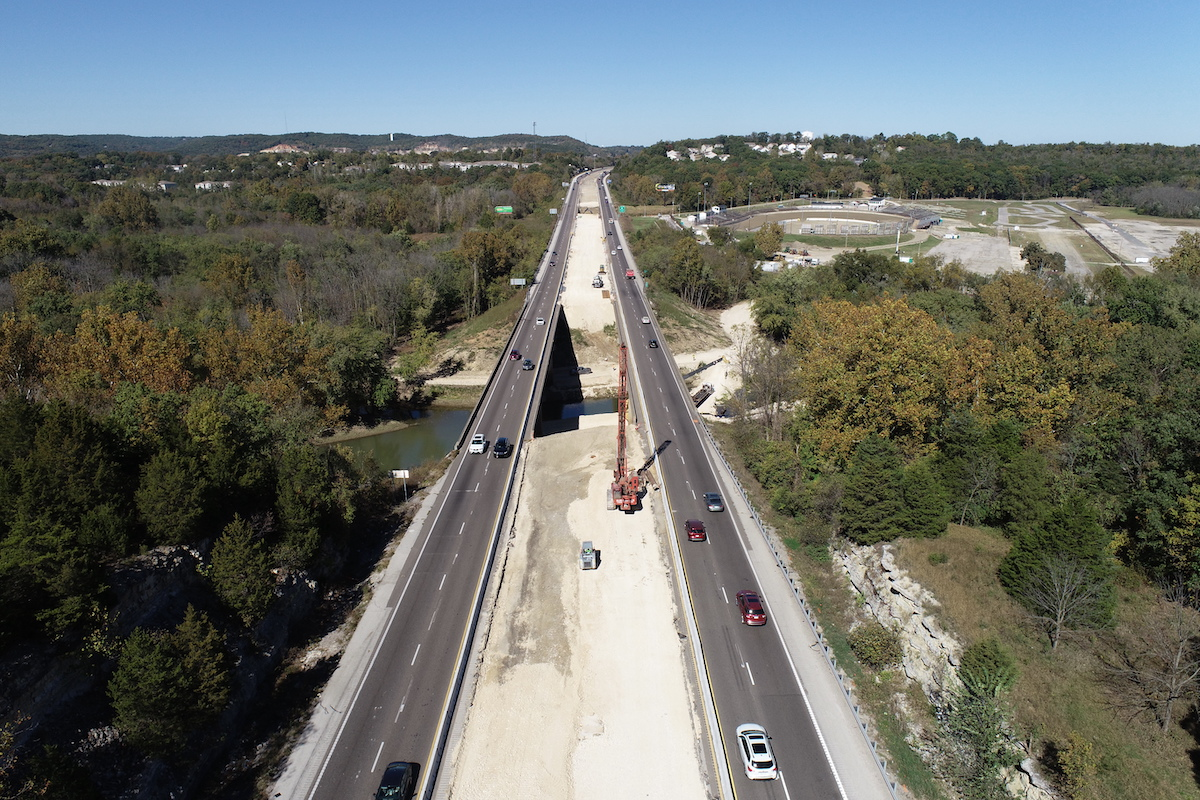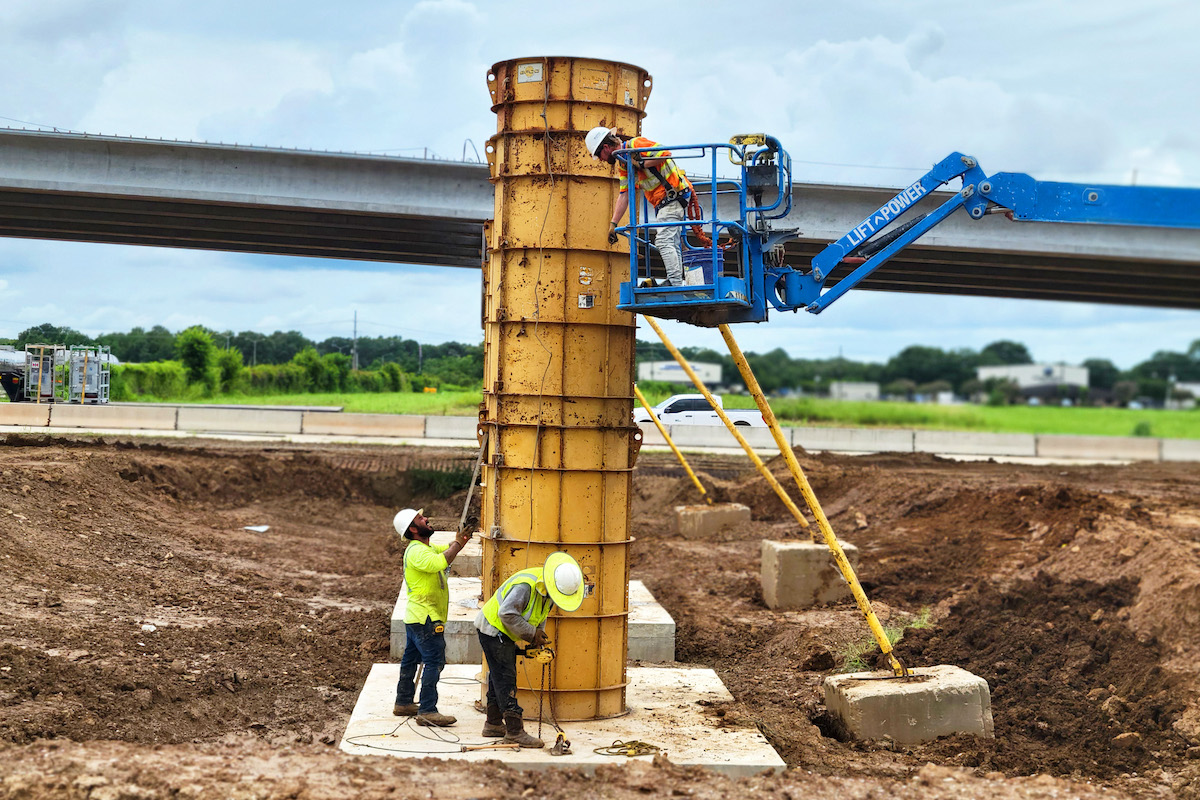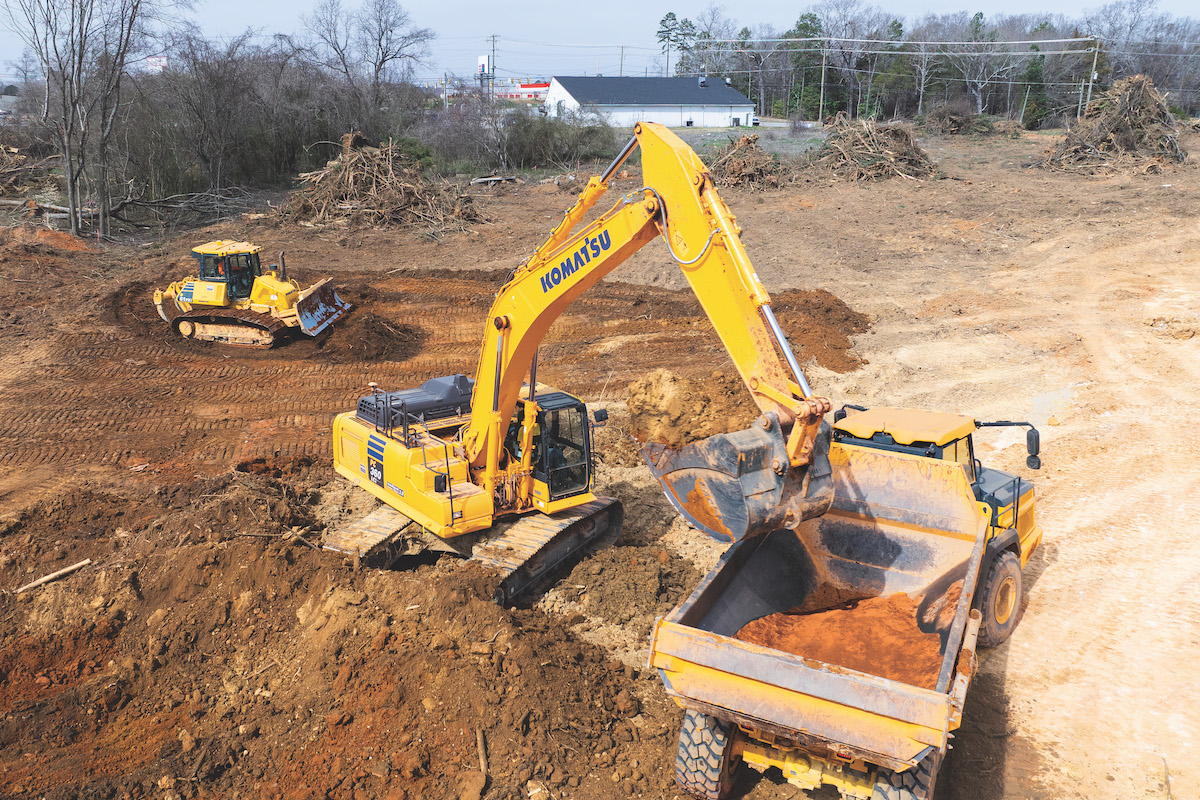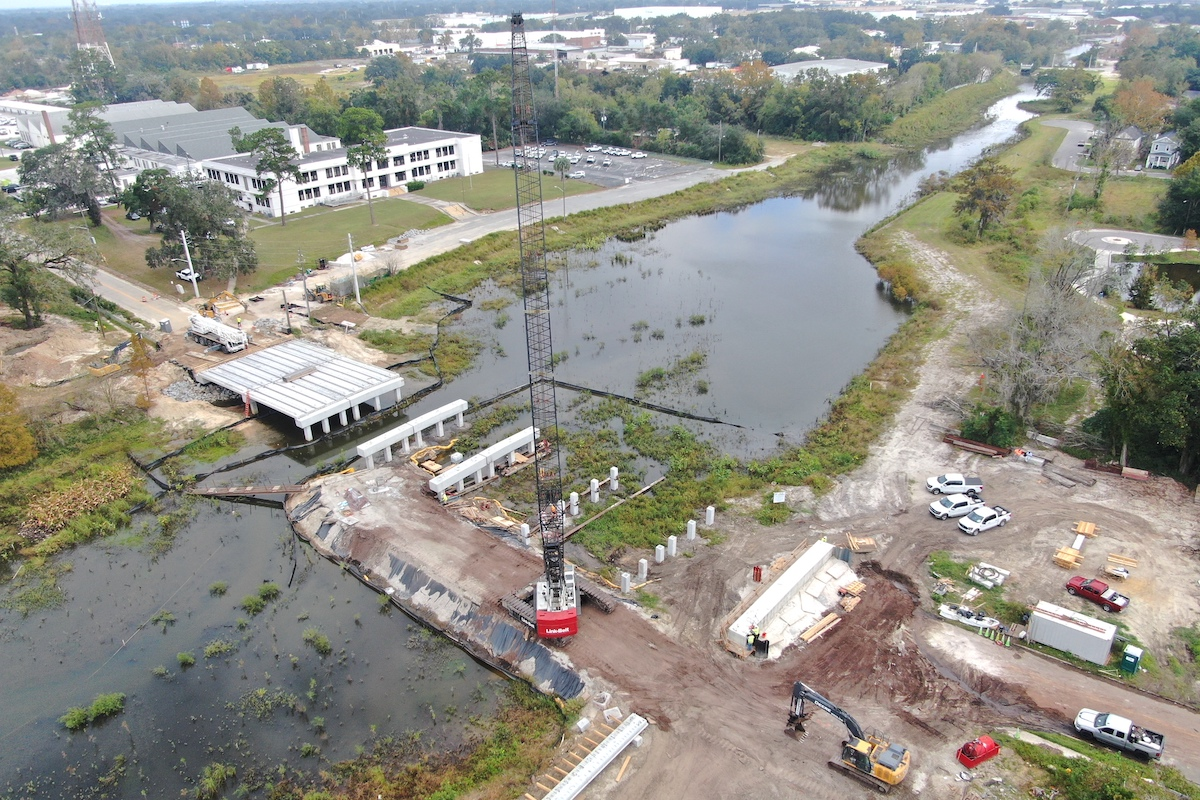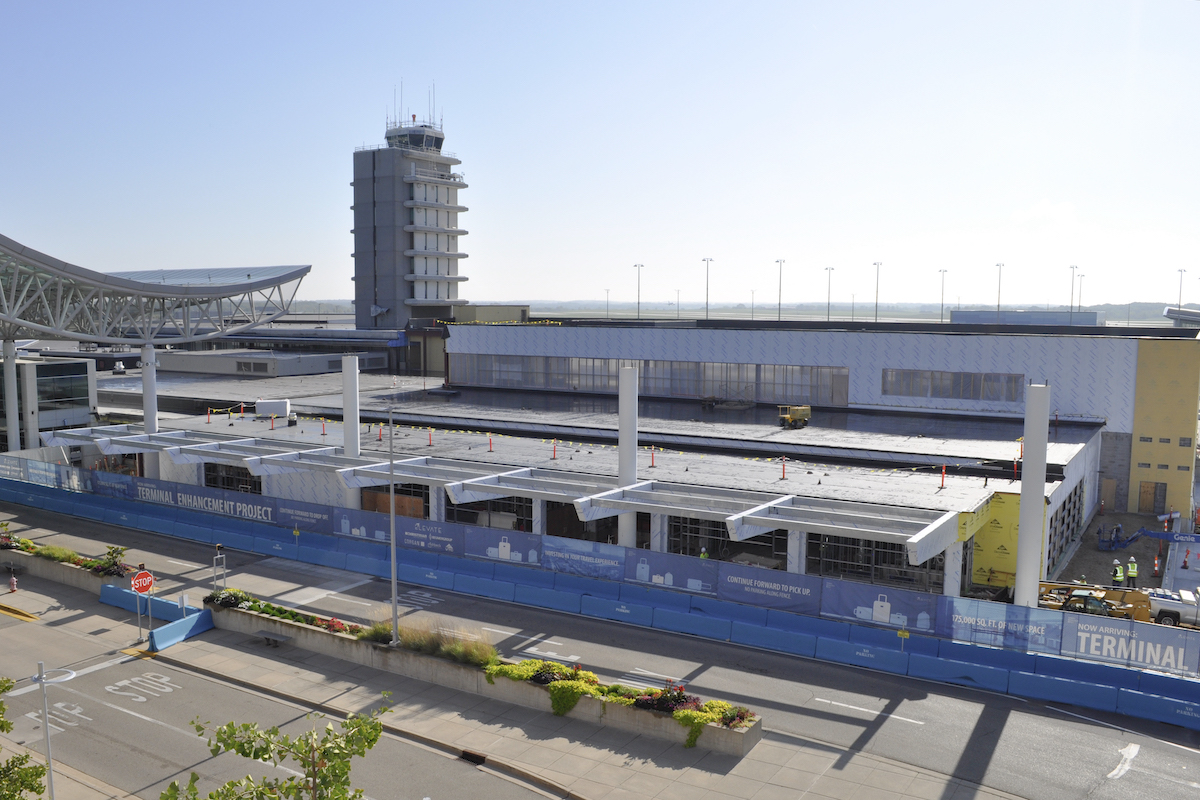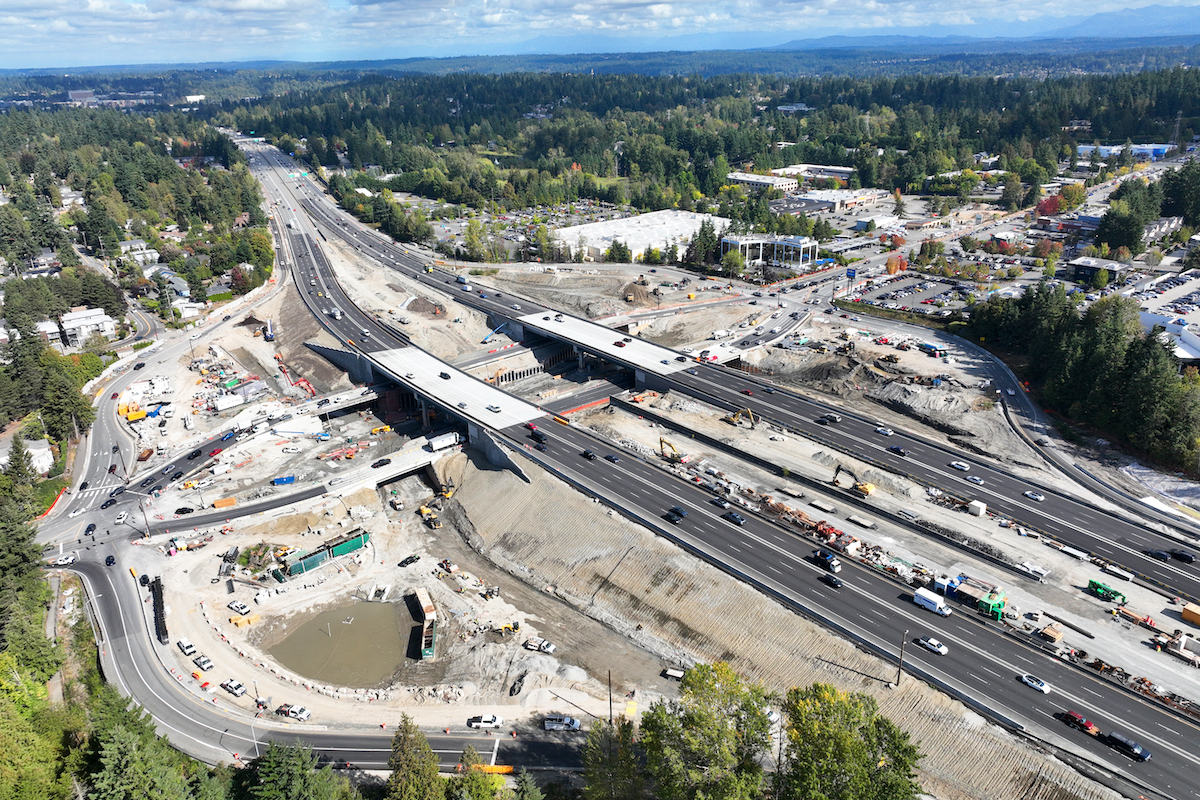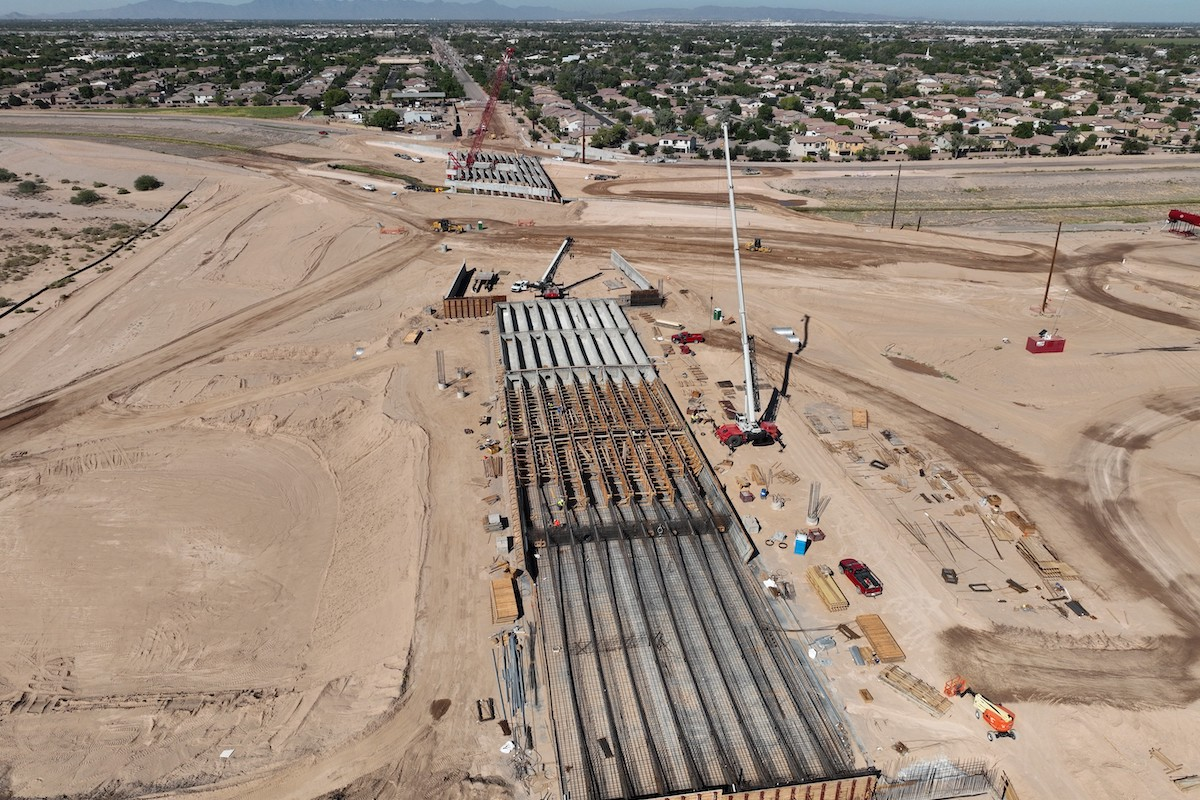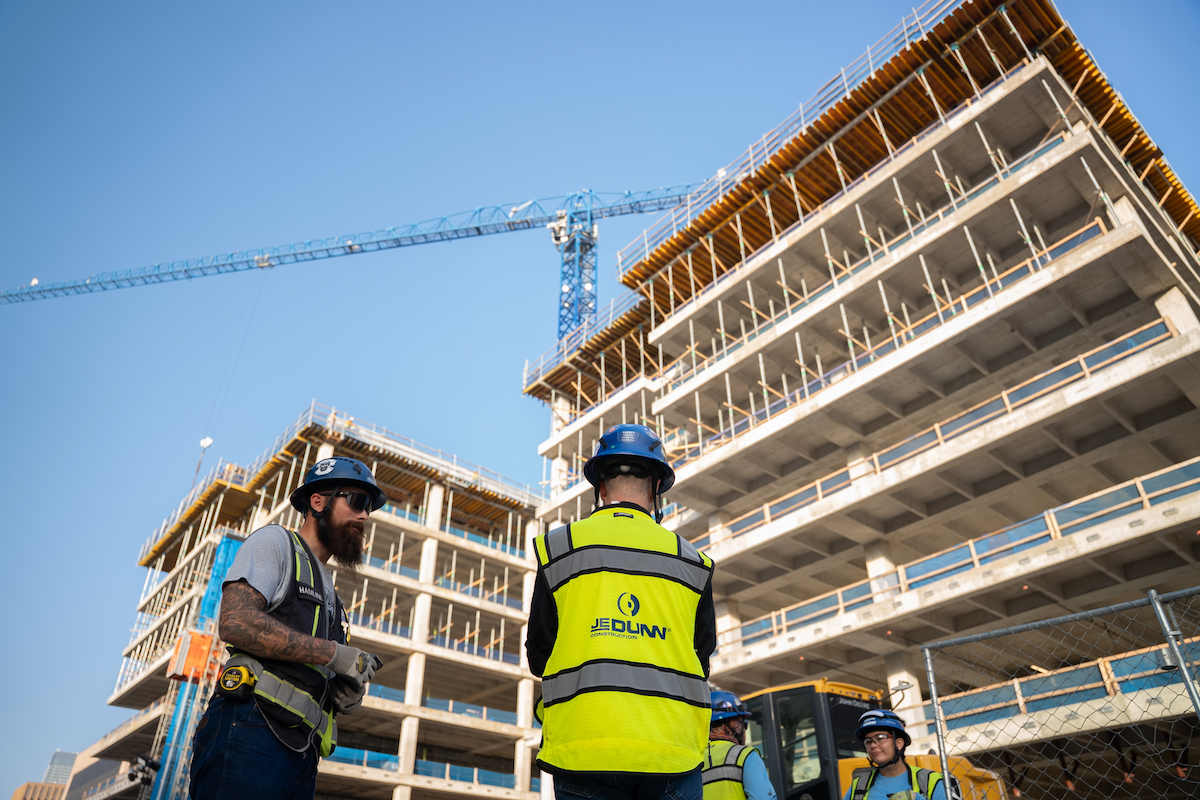The Black Hawk Bridge connects northeastern Iowa (IA 9) to northcentral Wisconsin (WI 82). The 1,700-foot-long cantilever bridge was completed in 1931 and combines two bridges. One bridge is a 350-foot-long precast pretension concrete beam approach bridge connecting to the Wisconsin side. The main steel truss bridge is 1,350 feet long and connects to the Iowa side.
The Iowa Department of Transportation (Iowa DOT), Wisconsin Department of Transportation (WisDOT), and general contractor Kraemer North America are building a replacement bridge for the aging structure.
According to Iowa DOT’s website, the bridge's history dates back to 1898 when the concept was first considered. Although the foundation for the bridge was not laid until 1929, and it opened in 1931, that still makes it 90-plus years old.
The bridge underwent major repairs in 1939 and was closed between 1945 to 1957 due to damage caused by ice. Before the bridge reopened, teams strengthened it and gave it a new deck.
Over the years, barges and boats struck the bridge piers. In 1993, a protection shell called a dolphin was constructed upstream of the bridge, with a second one placed in 2011.

| Your local Gomaco dealer |
|---|
| Swanston Equipment Co |
| Hayden-Murphy Equipment Co |
While the efforts have succeeded in keeping the bridge functional, the aging bridge is expensive to maintain and repair, and it is long past its design life.
The current two-lane bridge is just 21 feet wide. Although the average daily traffic is low at 2,200, the traffic that uses the bridge is challenged.
"The original geometrical dimensions of the bridge didn't consider the large trucks that we drive today," said Clayton Burke, a Project Manager at the Lansing Project Office for Iowa DOT. "Turning on and off the bridge is difficult for trucks, and some drivers are nervous about crossing it.”
The bridge is limited to legal limits (legal weight per axle). Despite regular requests, authorities will not permit overweight loads to cross the bridge.

| Your local Volvo Construction Equipment dealer |
|---|
| Nuss Truck & Equipment |
"We would have to stop traffic for overwidth vehicles such as farm implements," Burke said.
The new bridge deck will be 40 feet wide and include two 12-foot lanes and 8-foot shoulders on both sides. The piers feature over 1,200 cubic yards of mass concrete, and the team has developed and implemented innovative heating and cooling systems to maintain allowable temperatures during curing periods.
When determining the design of the new bridge, the team considered several options, including an arch, which is common and cost effective. However, the bridge is under the National Historic Preservation Act, which requires the team to mitigate the loss of a historic structure.
In Lansing — the town on the Iowa side of the bridge — many people feel a strong tie to the old structure. Burke knows the community well, as he grew up there until middle school.

| Your local Link Belt dealer |
|---|
| Hayden-Murphy Equipment Co |
"The bridge is their image, and the imprint is on business and city trucks," he said.
The new bridge will be a steel truss to mimic the look of the old bridge. However, the peaks of the steel truss will be 15 feet higher than the old peak.
The city is adding flair to the bridge due to the feelings it engenders in the community. They are paying to install special decorative lighting on the truss.
"The city wanted the color-changing LED lighting to indicate their pride in the bridge," Burke said.

| Your local Komatsu America Corp dealer |
|---|
| Road Machinery and Supplies Company |
Another design feature to show off the project is a specially designed mechanically stabilized earth wall for a new abutment. Built for the first time in Iowa, the wall’s exposed aggregate gives the bridge an attractive architectural feature incorporating natural river stone elements.
"We spent a good amount of time working with [Iowa] DOT and Midstates Precast to ensure the materials and manufacturing processes were up to speed," said Aaron Rosenbery, Senior Project Manager for Kraemer.
The bridge's main span will include a 764-foot clear span, whereas now the old bridge has a 640-foot clear span for barge traffic.
"While the old bridge had two concrete dolphins installed to protect it from barge strikes, the new bridge's main span was designed to take live barge strikes," Rosenbery said.

| Your local Trimble Construction Division dealer |
|---|
| SITECH Northwest |
The project includes work aside from the bridge. Just south of the project on the Iowa side is a major intersection, where state highways 9 and 26 meet.
"The intersection is very narrow so it's challenging for trucks to make the turn," Burke said. "We're widening the roadway too, so commercial trucks will have better mobility."
The new approaches will make for a better, safer driving experience.
Other improvements on the Iowa side include improvements to utilities and a rise in the capacity to handle stormwater. The new water main system will have an 8-inch line. The robust system will provide redundancy.

| Your local Gomaco dealer |
|---|
| Swanston Equipment Co |
| Hayden-Murphy Equipment Co |
"The line splits midway to handle various neighborhoods, and each split can be shut off individually," Rosenbery said.
While the area on the Wisconsin side of the bridge can be accurately described as rural, it still has plenty going on.
The bridge/project area cuts through the Upper Mississippi River National Wildlife and Fish Refuge, which is popular with birdwatchers and other outdoorsy types. Boaters, fishers, and duck hunters heavily utilize the backwater area. A big slough is maxed out in terms of attendance in the summer and fall.
The team is constructing a new entrance to the boat ramp to connect it to the new roadway. In addition, the entrance and exits to the bridge are being repaved and are expected to provide an improved vehicle turning radius.

| Your local Gomaco dealer |
|---|
| Swanston Equipment Co |
| Hayden-Murphy Equipment Co |
The Wisconsin side also has a staging area for the U.S. Army Corps of Engineers (USACE). USACE dredges the Mississippi River to maintain boat clearance. Contractors are welcome to take the sand and use it on projects. Over the years, barges have struck the bridge.
"We have to coordinate with [USACE], as they use shoreline just south of our temporary dockwall," Rosenbery said.
The team is building the new bridge just 75 feet from the old bridge, which will remain in use until the new one is complete. The proximity between the two bridges has presented the team with a challenge.
The team had to dig down 120 feet of sand to get to bedrock that would support the drilled shafts. They used a large vibratory hammer to get through the material, reach the necessary depth, and drive the steel casings. The vibration caused the existing bridge, which is on a timber pile, to shake.

| Your local Gomaco dealer |
|---|
| Swanston Equipment Co |
| Hayden-Murphy Equipment Co |
"We had to monitor the bridge to make sure it wasn't moving," Burke said.
The team monitors the bridge via a new GPS monitor that was mounted on the bridge. The monitor produced graphs the team reviewed to see if the bridge moved. The solar-powered monitoring system went offline a couple of times.
"When it came back online, the system needed to be recalibrated," Burke said.
During this time, the team received a phone call from the sheriff (who got a call from citizens) saying that the bridge looked off.

| Your local Gomaco dealer |
|---|
| Swanston Equipment Co |
| Hayden-Murphy Equipment Co |
"A kink moved out and came back in at one of the joints, and the pier underneath had moved," Burke said.
The bridge was closed right away while the team performed an emergency repair.
"We had to get the work done quickly because the bridge serves as a lifeline for local businesses," Burke said. "The contractor came up with a plan to lift the deck and superstructure and then remove and redo the pier that had moved."
The process took just six weeks. Burke credits the entire team, including local and state officials, for jumping into action and making sure the repair was handled rapidly.

| Your local Gomaco dealer |
|---|
| Swanston Equipment Co |
| Hayden-Murphy Equipment Co |
The old bridge moved a second time while the team performed a live survey. On this occasion, the movement was noticeable on the graphs.
Work was halted and an engineering consultant was brought in to determine how much the bridge could move before it impacted safety. This incident resulted in a one-month halt to construction. During this time, the team addressed the issue.
Construction on the new bridge began in late 2023 and was projected to open to traffic by the end of 2026. However, the team lost three to five months of schedule due to the bridge movement, emergency repair, and flooding.
"We’re figuring out now how to get it back on schedule," Burke said. "Kraemer is efficient, and built in contingency, so the project would have been done early if nothing happened."

| Your local Gomaco dealer |
|---|
| Swanston Equipment Co |
| Hayden-Murphy Equipment Co |
One of Kraemer’s methods to make up time is working longer shifts and Saturdays. Other mitigation efforts, such as extra barges to ship material, are also being considered.
The project budget is $140 million. The federal government is funding approximately 80 percent of the costs while the two states evenly split the remaining costs.
There have been over 40 change orders for minor things that were unforeseen and not in the contract, which has the project 8 percent over low bid cost.
"We use the engineers' estimate, which was $140 million, and we still expect to end up within that range," Burke said. This does not include the emergency repair, which was $2 million.

| Your local Gomaco dealer |
|---|
| Swanston Equipment Co |
| Hayden-Murphy Equipment Co |
When the team completes the construction of the new Black Hawk Bridge, the area will be more accessible. The added width on the bridge and tight corners mean wide loads will be able to use the new bridge.
Local traffic will also benefit from the safer bridge. Widening the piers will make it easier for commercial traffic to pass underneath the bridge. The new bridge will provide a lower life cycle cost through reduced maintenance and repairs.
- Owners: Iowa Department of Transportation; Wisconsin Department of Transportation
- General Contractor: Kraemer North America, Plain, Wisconsin
- Designers: Burns & McDonnell, Kansas City, Kansas; Parsons, Centreville, Pennsylvania; SEH, St. Paul, Minnesota; Stanley Consultants, Muscatine, Iowa; Iowa DOT
- Engineers: Iowa DOT; HNTB, Kansas City, Missouri
- Other Contractors: Braun Intertec, Minneapolis, Minnesota; Terracon Consultants, Olathe, Kansas; Dan Brown and Associates, Knoxville, Tennessee; HDR, Omaha, Nebraska; FOTH, Dearborn, Michigan; Stantec, Edmonton, Canada; WJE, Northbrook, Illinois; KTA-Tator, Pittsburgh, Pennsylvania; Tschiggfrie Construction, Dubuque, Iowa; Kadilex Construction, Wood River, Illinois; KW Electric, Plymouth, Wisconsin; Iowa Plains, Slater, Iowa; Hirschmugl Heine & Associates, Deale, Maryland













